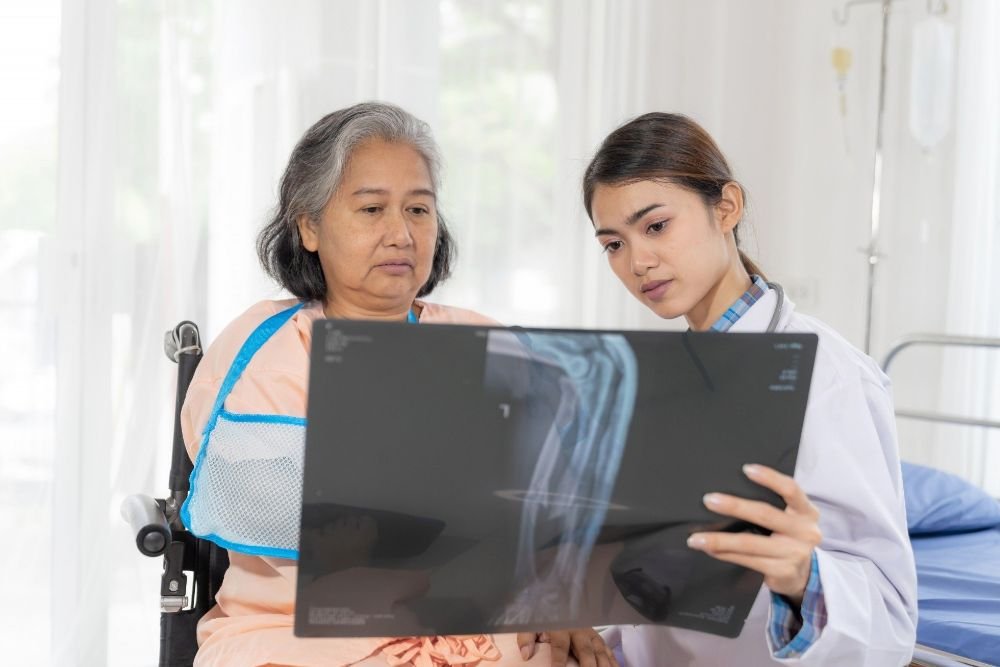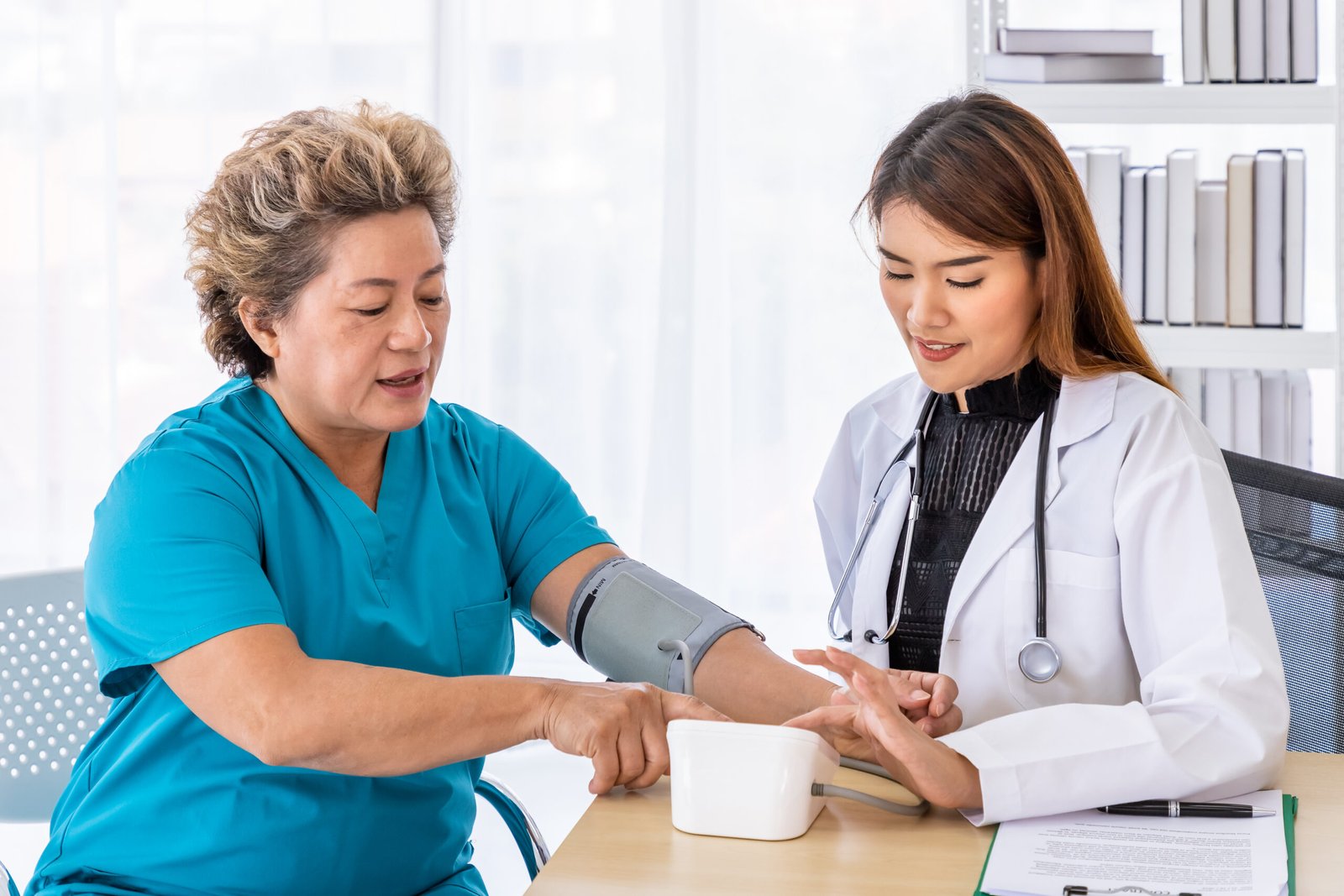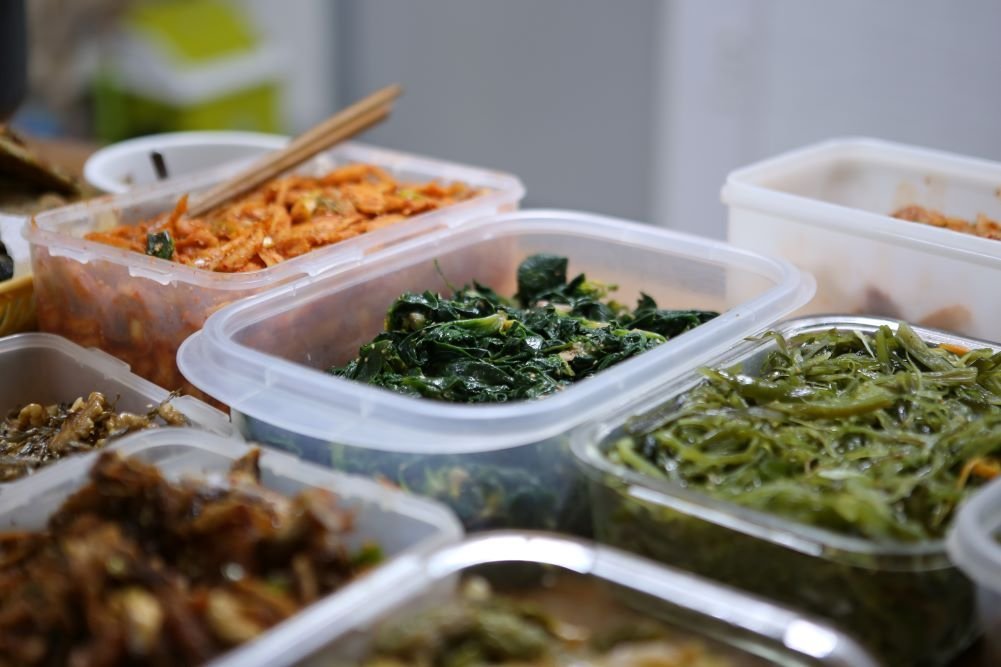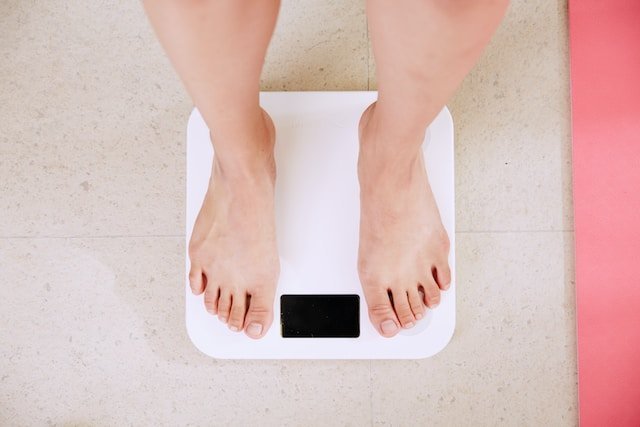
Osteoporosis is often called a “silent disease”—you may not know you have it until a fracture occurs. These fractures, especially in the hip or spine, can lead to long-term disability. I witnessed this firsthand with my 93-year-old grandmother. Once vibrant and independent, she became bedridden after a hip fracture—losing not just her mobility but her spirit.
As a nutritionist, I thought I was doing everything right—taking calcium, staying active, lifting weights, and getting sun exposure. So, when my DEXA scan showed osteopenia, the early stage of bone loss, I was devastated. It’s a warning sign that your bones are becoming weaker, and without intervention, it can progress to osteoporosis.
Shockingly, about 50% of women over 50 have some level of osteopenia. And yes—men are affected too. While we reach peak bone mass around age 30, it’s still possible to maintain—or even improve—bone density through smart nutrition and targeted exercise, even after menopause.
But don’t wait until menopause. Bone loss accelerates during perimenopause and the first 5–7 years after your final period. The earlier you take action, the better.
Nutrients to Nourish your Bones
From a nutrient stand-point you need a cocktail of nutrients for holistic bone health support:
Calcium
Calcium is crucial for bone health because it forms the main building block of our bones. In fact, about 99% of the calcium in our bodies is stored in our bones and teeth. Without enough calcium, bones can become weak and brittle over time. The International Osteoporosis Foundation recommends that women aged 19 to 50 get about 1,000 mg of calcium daily, and this increases to 1,200 mg per day for women over 51, particularly after menopause [1].
You don’t need a 1200mg calcium dose daily. Consume calcium-rich food and take a daily dose of 500–600 mg supplement. Also, split the dose into two – take it with meals and withvitamins D3, K2, A, and magnesium, as these nutrients tend to work together. Among the different supplements available, calcium carbonate and calcium citrate are the most common. Calcium carbonate is best taken with food, while calcium citrate can be taken with or without food. For years I have heard that calcium carbonate is like cement, so I do tend to lean towards calcium citrate.
Vitamin D3
Vitamin D plays an important role in helping your body absorb calcium from the food you eat. It also supports bone health by regulating parathyroid hormone levels, which in turn helps reduce bone loss. Additionally, vitamin D helps keep the bone renewal process working smoothly, allowing bones to stay strong over time [2].
Sunlight (10–15 mins/day) is the best source – but many people today—especially those who spend most of the day indoors—don’t get enough sunlight. Also, as we age, our skin becomes less efficient at making vitamin D from sunlight [2].
Adaily dose of 800 to 1,000 IU per day is advisable. Also, because vitamin D is fat-soluble, it’s best taken with meals and with calcium and magnesium [2].
Magnesium
Magnesium is another essential mineral for bone health. About 60% of the magnesium in your body is stored in your bones, where it helps keep them strong and structurally sound. It plays a key role in forming the mineral crystals that make up bone, and it also helps activate vitamin D, which in turn improves the absorption of both magnesium and calcium from the diet. Beyond that, magnesium helps regulate the activity of osteoblasts (the cells that build bone) and bone-breaking cells (osteoclasts), ensuring a healthy balance in the constant process of bone renewal. It also helps keep calcium levels stable in the body, which is important for maintaining proper bone mineralization [3].
Given these important functions, it’s not surprising that studies have found a link between low magnesium levels (a condition known as hypomagnesaemia) and lower bone mineral density in menopausal women. One clinical review found that magnesium supplementation may help alleviate symptoms of osteoporosis to some extent, reinforcing the importance of including this mineral in your bone health routine [3].Women need ~300 mg/day[4]. Magnesium citrate, glycinate, and threonate are well absorbed.
Vitamin K2
Vitamin K2 is a fat-soluble vitamin that plays an important, but often overlooked role in bone health. It works synergistically with vitamin D3: while vitamin D3 helps your body absorb calcium from food into the bloodstream, vitamin K2 helps direct that calcium from the blood into your bones—where it’s needed most—and prevents it from accumulating in the arteries (calcification of arteries). Vitamin K2 also activates a protein called osteocalcin, which binds calcium to the bone matrix, supporting bone mineralization and contributing to stronger, denser bones [5].Recent research reviewing several studies found that taking vitamin K2 supplements can help strengthen bones and lower the risk of fractures in postmenopausal women[5].
The daily requirement is 60mcg [4]. Supplement form MK-7 (menaquinone-7) is better than MK-4 due to longer half-life and is advisable especially if you are on a low-fat diet or taking certain medications for e.g., statins or blood pressure lowering medications.The supplement should be taken with food to enhance absorption. If on medication, its best to consult your doctor before taking vitamin K2.
Other Vitamins: A, B, C, E
Vitamin A & Carotenoids
Getting the right amount of Vitamin A is key is important – too much (especially from supplements) may weaken bones, while too little can impair bone formation. Carotenoids, the natural pigments in colourful fruits and vegetables, are also linked to stronger bones and lower fracture risk [6]. It is best to get vitamin A and carotenoids from a diet rich in leafy greens, carrots and other yellow-orange fruit and vegetables and eggs.
B Vitamins
B vitamins – B6, B9 (folate), and B12—support bone health by reducing homocysteine levels and supporting bone cell function. Low levels have been linked to weaker bones and a higher fracture risk. Vitamin B5 and B1 may also help regulate bone remodelling. While evidence on supplements is mixed, getting enough B vitamins from a balanced diet may help maintain healthy bones, particularly in older adults[6].
Vitamin C
Vitamin C helps produce collagen, a key building block of strong bones. It also “turns on” signals that encourage osteoblasts (bone-building cells) to grow and work properly. Plus, it protects bones by controlling how they break down and by acting as an antioxidant. Eating more vitamin C is linked to stronger bones and fewer fractures, especially for women after menopause [6].
Vitamin E
Vitamin E, especially α-tocopherol and tocotrienols, may help protect bones by reducing inflammation and oxidative stress. Low levels are linked to lower bone density and higher fracture risk, particularly in postmenopausal women. While more research is needed, getting enough from vegetable oils, nuts, green vegetables, and fortified foods may support bone strength [6].
Protein
Protein plays a vital role in bone health by providing the amino acids needed to build and maintain bone tissue. It also stimulates the production of insulin-like growth factor 1 (IGF-1), a hormone that promotes bone formation and enhances calcium absorption [7].
As we age—particularly during peri- and post-menopause—protein becomes increasingly important to maintain bone mineral density, slow the rate of bone loss, and reduce the risk of fractures. Lower oestrogen levels during this phase accelerate bone loss, and age-related muscle decline (sarcopenia) adds to the risk of falls and injury. Meeting daily protein needs helps support both bone and muscle health[7].
While the general recommendation for adults is around 0.8 g/kg body weight per day, many experts now advise 1.0–1.2 g/kg/day for older adults, especially for women post-50 [8]. Contrary to past concerns, recent research shows that higher protein intake does not harm bones when calcium intake is sufficient. In fact, protein-rich diets—balanced with adequate calcium and other nutrients—are beneficial for overall skeletal health [8].
Trace Minerals: Zinc, Copper, Boron
Zinc
Zinc plays an important role in keeping bones healthy and strong as we age. It supports the activity of osteoblasts (the cells that build bone) and enzymes that help protect bone cells from damage. It slows down the action of osteoclasts (the cells that break down old bone). Zinc also works closely with vitamin D and growth hormones to support ongoing bone renewal and mineralization [9].
Low zinc levels have been linked to weaker bones and a higher risk of osteoporosis. Research shows that women with osteoporosis often have lower levels of zinc in their bones compared to women with healthy bones [9].A15mg[4] dose of zinc may be taken daily with meals – ideally with vitamin D3, which works together with zinc to support bone health[8].
Copper
Copper may be a trace mineral, but it plays a key role in keeping our bones strong. It helps build collagen and supports both osteoblasts (the cells that build bone) and osteoclasts (the cells that break down old bone), helping to maintain the body’s natural bone renewal cycle. Copper is essential for the activity of certain enzymes that are directly involved in forming and maintaining healthy bone tissue. Copper also reduces inflammation, lowers oxidative stress, and influences key signalling pathways involved in bone metabolism. When copper levels are out of balance, it can impair how bones form, heal, or maintain their strength [10].
Early studies suggest 2.5 – 3mg per day may reduce bone loss in midlife women [11]. The RDA (recommended daily amount) for copper is 900mcg[4] -a supplement may be considered to support bone health.
Boron
Boron is a trace element that is essential for growth and maintenance of the bone – It supports calcium metabolism, boosts magnesium absorption, impacts the body’s use of oestrogen and vitamin D.No daily intake levels (RDA) have been established. Research suggests an intake of 1 – 3mg daily may help preserve bone mineral density[12, 13].
Dietary Considerations
Include Fruits & Vegetables
Aim for at least five servings of fruits and vegetables each day. One serving is roughly one small plate of cut fruit, a medium-sized fruit that fits in your palm, one cup of raw vegetables, or ¾ cup of cooked vegetables. Fruits and vegetables supply important vitamins, minerals, antioxidants, and fibre—nutrients that are essential for maintaining strong bones. Fibre also acts as a prebiotic, feeding beneficial gut bacteria. These bacteria ferment fibre into short-chain fatty acids, which support gut health and improve mineral absorption, including calcium and magnesium.
In older adults, a diet rich in fruits and vegetables has been linked to better bone mineral density and lower fracture risk [14]. If you’re concerned about sugar content of fruit, choose lower-GI fruits like berries, cherries, and grapefruit, followed by apples, pears, plums, and peaches.
Consider a Mediterranean diet
A Mediterranean-style diet—rich in whole foods like olive oil, legumes, vegetables, whole grains, moderate amounts of fish and dairy—has been associated with improved bone mineral density and a reduced risk of fractures. This dietary pattern has been associated with higher bone mineral density and reduced fracture risk [14].
| Intervention | Role in Bone Health | Recommended Intake / Sources | Notes / Evidence |
|---|---|---|---|
| Calcium | Primary mineral in bones; essential for bone strength and structure | 1000 mg/day (19–50 yrs), 1200 mg/day (51+ women); dairy, tofu, leafy greens, sardines | Best absorbed with food and in divided doses; pair with vitamin D, K2, and magnesium |
| Vitamin D3 | Aids calcium absorption, supports bone remodelling, regulates PTH to reduce bone loss | 800–1000 IU/day; sunlight (10–15 min), oily fish, eggs, liver, fortified foods | Older adults may need supplements due to reduced synthesis; best with meals |
| Magnesium | Supports bone mineralization, balances osteoblast and osteoclast activity | 300 mg/day; leafy greens, legumes, whole grains, nuts, seeds, fish, dried fruit | Absorption declines with age; consider glycinate, citrate or threonate forms |
| Vitamin K2 | Helps calcium bind to bones; prevents arterial calcification | 60 mcg; natto, raw cheese, egg yolks, liver, grass-fed meat, cod liver oil | MK-7 form preferred; reduces bone loss and fracture risk in postmenopausal women |
| Vitamin A | Regulates bone turnover; excess increases fracture risk | Leafy greens, carrots, sweet potatoes, eggs | Use caution with high-dose supplements |
| Carotenoids | Linked to stronger bones; reduce inflammation | Colorful fruits & vegetables (carrots, sweet potatoes, tomatoes, spinach) | Safe and beneficial from whole foods |
| B Vitamins | Reduce homocysteine; support bone function and remodeling | Whole grains, leafy greens, legumes, eggs, dairy, meat, fortified foods | Mixed evidence on supplements; deficiency raises fracture risk |
| Vitamin C | Promotes osteoblast function and collagen synthesis | Citrus fruits, papaya, kiwi, bell peppers, tomatoes, broccoli | Linked to lower fracture rates and higher bone density in postmenopausal women |
| Vitamin E | Reduces inflammation and oxidative stress | Vegetable oils, nuts, green vegetables, fortified foods | Low levels linked to reduced bone density and higher fracture risk |
| Protein | Builds bone matrix, increases IGF-1 and supports calcium absorption | 1.0–1.2 g/kg/day; dairy, fish, meat, legumes, soy, seeds, whole grains | Important for bone density and fracture prevention in aging women |
| Zinc | Supports bone formation, reduces breakdown, antioxidant | 15 mg/day; red meat, legumes, pulses, whole grains, dried fruit | Works with vitamin D and IGF-1; lower in osteoporotic women |
| Copper | Collagen formation and bone turnover enzymes | 900 mcg/day; shellfish, seeds, nuts, legumes, whole grains, liver | 2.5–3 mg/day supplements may slow bone loss; needs more research |
| Boron | Enhances calcium, magnesium, vitamin D metabolism; balances oestrogen | No set RDA; prunes, raisins, almonds, legumes, leafy greens | 1–3 mg/day supports bone health in postmenopausal women |
| Fruits & Vegetables | Antioxidants, fiber, micronutrients improve mineral absorption | 5 servings/day; 1 cup raw veg, ¾ cup cooked, palm-sized fruit | Linked to higher bone density and reduced fracture risk in older adults |
| Mediterranean Diet | Whole food-based; linked with higher bone mineral density | Focus on vegetables, legumes, olive oil, moderate dairy & fish | Shown to reduce fracture risk and improve bone health |
Lifestyle Considerations
Limit Alcohol
Excessive alcohol intake can increase risk of a fragility fracture. Health authorities recommend no more than two units of alcohol per day. One unit of alcohol is equal to a single shot of whisky, gin or brandy; half a pint of beer or cider; a quarter of a pint of strong beer or cider. One small glass (125ml) of table wine is one and a half units[15].
Limit Caffeine
It is best to limit caffeine intake, as it can increase both urinary and faecal calcium losses, which—when combined with a low-calcium diet—may negatively impact bone health.
Consuming 330 mg of caffeine per day (equivalent to about four cups or 600 mL of coffee) has been associated with a 20% higher risk of osteoporotic fractures compared to an intake of less than 200 mg per day [16]. Consuming an additional 40 mg of calcium for every cup of coffee consumed may help counterbalance this effect [17].
Conclusion
Bone health may not always be top of mind—until it’s compromised. But the truth is, it’s never too early or too late to take action. While aging and hormonal changes during menopause can accelerate bone loss, a well-balanced, nutrient-rich diet can be a powerful tool to preserve and even improve bone strength.
By prioritizing key nutrients—like calcium, vitamin D3, magnesium, vitamin K2, othervitamins (A, B, C, E + carotenoids), protein, and trace minerals (zinc, copper, boron) —and embracing whole foods such as leafy greens and other vegetables, fruits, legumes, dairy, fish, nuts, seedswith olive oil and oily fish you can nourish your bones from within.
When combined with an active lifestyle that includes weight-bearing exercises and smart lifestyle choices, these nutritional strategies form the foundation for stronger bones, fewer fractures, and healthier aging. Think of food and supplements not just as fuel—but as one of your best defences for lifelong bone resilience.
Disclaimer Notice The information provided on this website, www.veveva-nutrition.com, is for general informational purposes only and is not intended as medical advice, diagnosis, or treatment. It should not replace consultation with a qualified healthcare professional. VeVeva Nutrition Pte Ltd (“VeVeva”), its directors, employees, affiliates, and partners make no representations or warranties regarding the accuracy, completeness, or reliability of the information provided. If you have any health concerns, are taking long-term medication, or are under medical supervision, please consult a doctor or qualified healthcare professional before making any changes to your diet, lifestyle, or treatment. Never disregard professional medical advice or delay seeking it because of something you have read on this website.
References
1.Calcium. International Osteoporosis Foundation. https://www.osteoporosis.foundation/health-professionals/prevention/nutrition/calcium
2. Vitamin D. International Osteoporosis Foundation. https://www.osteoporosis.foundation/health-professionals/prevention/nutrition/vitamin-d
3.Rondanelli M, Faliva MA, Tartara A, Gasparri C, Perna S, Infantino V, Riva A, Petrangolini G, Peroni G. An update on magnesium and bone health. Biometals. 2021 Aug;34(4):715-736. doi: 10.1007/s10534-021-00305-0. Epub 2021 May 6. PMID: 33959846; PMCID: PMC8313472. https://pmc.ncbi.nlm.nih.gov/articles/PMC8313472/
4. Codex NRV. https://openknowledge.fao.org/server/api/core/bitstreams/2033128c-4d26-47d0-8f67-2f736c4a1d29/content
5.Ma ML, Ma ZJ, He YL, Sun H, Yang B, Ruan BJ, Zhan WD, Li SX, Dong H, Wang YX. Efficacy of vitamin K2 in the prevention and treatment of postmenopausal osteoporosis: A systematic review and meta-analysis of randomized controlled trials. Front Public Health. 2022 Aug 11;10:979649. doi: 10.3389/fpubh.2022.979649. PMID: 36033779; PMCID: PMC9403798. https://pubmed.ncbi.nlm.nih.gov/36033779/
6.Skalny AV, Aschner M, Tsatsakis A, Rocha JBT, Santamaria A, Spandidos DA, Martins AC, Lu R, Korobeinikova TV, Chen W, Chang JS, Chao JCJ, Li C, Tinkov AA. Role of vitamins beyond vitamin D3 in bone health and osteoporosis (Review). Int J Mol Med. 2024 Jan;53(1):9. doi: 10.3892/ijmm.2023.5333. Epub 2023 Dec 8. PMID: 38063255; PMCID: PMC10712697. https://pubmed.ncbi.nlm.nih.gov/38063255/
7.Darling AL, Millward DJ, Lanham-New SA. Dietary protein and bone health: towards a synthesised view. Proc Nutr Soc. 2021 May;80(2):165-172. doi: 10.1017/S0029665120007909. Epub 2020 Nov 13. PMID: 33183359. https://pubmed.ncbi.nlm.nih.gov/33183359/
8. Protein and other nutrients. International Osteoporosis Foundation. https://www.osteoporosis.foundation/health-professionals/prevention/nutrition/protein-and-other-nutrients
9.Molenda M, Kolmas J. The Role of Zinc in Bone Tissue Health and Regeneration-a Review. Biol Trace Elem Res. 2023 Dec;201(12):5640-5651. doi: 10.1007/s12011-023-03631-1. Epub 2023 Apr 1. PMID: 37002364; PMCID: PMC10620276. https://pubmed.ncbi.nlm.nih.gov/37002364/
10.Zihan Zhang, Huixue Tang, Tingting Du, Di Yang. The impact of copper on bone metabolism. Journal of Orthopaedic Translation. Volume 47, July 2024, Pages 125-131. 24 June 2024. https://www.sciencedirect.com/science/article/pii/S2214031X24000640
11. Rondanelli M, Faliva MA, Infantino V, Gasparri C, Iannello G, Perna S, Riva A, Petrangolini G, Tartara A, Peroni G. Copper as Dietary Supplement for Bone Metabolism: A Review. Nutrients. 2021 Jun 29;13(7):2246. doi: 10.3390/nu13072246. PMID: 34210051; PMCID: PMC8308383. https://pubmed.ncbi.nlm.nih.gov/34210051/
12.Pizzorno L. Nothing Boring About Boron. Integr Med (Encinitas). 2015 Aug;14(4):35-48. PMID: 26770156; PMCID: PMC4712861. https://pubmed.ncbi.nlm.nih.gov/26770156/
13.Rondanelli M, Faliva MA, Peroni G, Infantino V, Gasparri C, Iannello G, Perna S, Riva A, Petrangolini G, Tartara A. Pivotal role of boron supplementation on bone health: A narrative review. J Trace Elem Med Biol. 2020 Dec;62:126577. doi: 10.1016/j.jtemb.2020.126577. Epub 2020 Jun 6. PMID: 32540741. https://pubmed.ncbi.nlm.nih.gov/32540741/
14. Rizzoli R, Chevalley T. Nutrition and Osteoporosis Prevention. Curr Osteoporos Rep. 2024 Dec;22(6):515-522. doi: 10.1007/s11914-024-00892-0. Epub 2024 Sep 25. PMID: 39322861; PMCID: PMC11499541. https://pubmed.ncbi.nlm.nih.gov/39322861
15.Royal Osteoporosis Society https://theros.org.uk/information-and-support/bone-health/nutrition-for-bones/are-there-any-foods-i-should-avoid/
16.Hallstrom, H., et al., Coffee, tea and caffeine consumption in relation to osteoporotic fracture risk in a cohort of Swedish women. Osteoporos Int, 2006. 17(7): p. 1055-64. https://pubmed.ncbi.nlm.nih.gov/16758142/
17.Barrett-Connor, E., J.C. Chang, and S.L. Edelstein, Coffee-associated osteoporosis offset by daily milk consumption. The Rancho Bernardo Study. JAMA, 1994. 271(4): p. 280-3. https://pubmed.ncbi.nlm.nih.gov/8295286/




